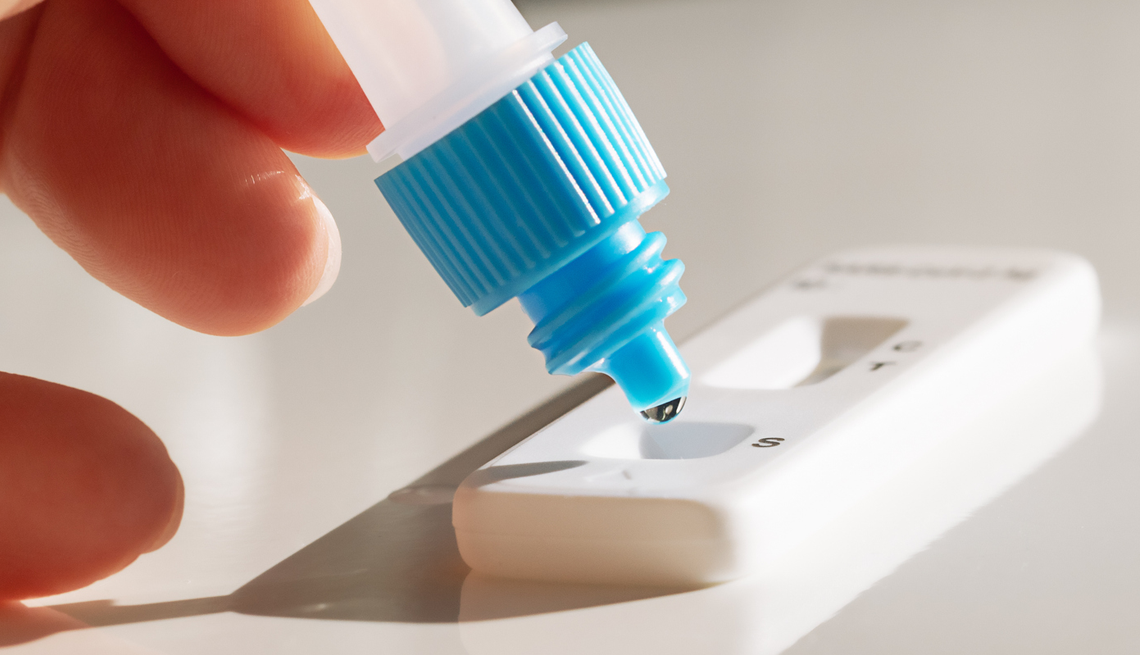AARP Hearing Center


The federal government has suspended its COVID-19 test distribution program and is no longer accepting orders for free at-home test kits.
The website where people could previously place orders for up to four free tests per household says orders placed before 8:00 p.m. on March 9 will still be shipped. The website also says that rapid tests that detect COVID-19 are sold at pharmacies, grocery stores and many other retailers nationwide. Prices vary, but a pack of two at-home tests typically costs around $20.
The test distribution program began in the winter of 2022 and has run intermittently since. As of October 2024, it had distributed approximately 900 million free tests to American households.
Tests remain a key tool for older adults
Doctors and public health experts have long stressed that testing is especially important for older adults who experience a fever, cough, sore throat or other symptoms that could signal COVID-19.
Age and COVID Risk
Age remains the strongest risk factor for severe COVID outcomes. Compared with people ages 18–29 years, the risk of death is:
- 25 times higher in those ages 50–64
- 60 times higher in those ages 65–74
- 140 times higher in those ages 75–84 years
- 340 times higher in those age 85-plus
Source: CDC
The main reason is “so that they can get an antiviral as soon as possible” if the test indicates the coronavirus is to blame, explains Jodie Guest, a professor and senior vice chair in the Department of Epidemiology at Emory University’s Rollins School of Public Health.
In clinical trials and real-world studies, antiviral treatments, like Paxlovid, have been shown to significantly reduce the risk of hospitalization and death in people at high risk for severe illness, a population that includes older adults.
“Antivirals interfere with the virus and decrease the level of the virus in a person’s body, and thereby decrease complications, decrease symptoms, get you better faster, and in some cases, even prevent death,” infectious disease expert Amesh Adalja, M.D., a senior scholar at the Johns Hopkins Center for Health Security, said in a recent news briefing.
However, the Centers for Disease Control and Prevention (CDC) says for these medications to be effective, they need to be started as soon as possible — within five to seven days of symptom onset.


































































More From AARP
5 Years In, Older Adults Continue to Bear Brunt of COVID
The virus has killed 1.2 million Americans, and most are ages 50-plus COVID-19's Profound Effects on Older Adults
Decongestants That Don’t Actually Work
Experts have deemed a common ingredient ineffectiveWhat It’s Like to Catch COVID Over and Over
He’s had four bouts so far, and he says it has changed him